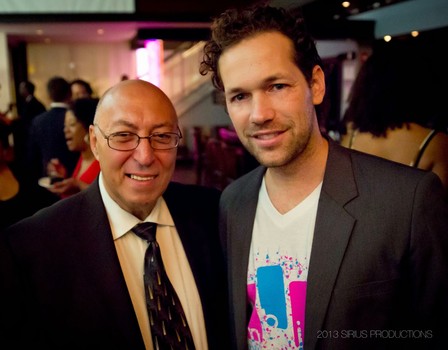Like many things in Miami, the jazz music scene is one of its best-kept secrets. For its inaugural year, the Miami Beach Jazz Festival was held at Miami’s most renowned venue, the Fillmore Stage at the Jackie Gleason Theater on Nov. 16. Home to many great acts, the performers sets were nothing short of a masterpiece.
After a warm welcome from founder and chairman Carmen J. Cartiglia, New Orleans’ jazz band The Brass-A-Holics began the night on a funky tempo. Interspersed with a few renditions, notably Nirvana’s “Come As You Are,” and Roger Miller’s “Engine Engine #9,” and music off their most recent album, The Brass-A-Holics did their best to get the crowd on their feet. Since the audience was reluctant to their ploys, the band made up for their inactivity by performing one of their songs around the first floor of the theater.
In order to recognize and pave the way for up and coming talent in Miami, the festival honored two student groups from the competition: an instrumental and vocal group, respectively. Both the Max Holm Quartet and the Jahzel Dotel Quartet paid homage to the early pioneers of jazz music, most notably Duke Ellington, keeping in line with the mission of the competition to preserve the importance of jazz culture.
The evening began to mellow out midway with the ‘duo,’ better known as Joe Carter and Ali Ryerson. As compared to the previous acts, the duo kept it light with a one-note samba, and some melodic, slow tempo jazz. Ryerson made it personal by recreating jazz pianist Bill Evan’s “We Will Meet Again,” as a dedication to her older brother who inspired her musical career.
After the duo took everything down a notch, Austrian pianist, composer, and artistic director of the festival, Markus Gottschlich teamed up with Grammy Award-Winning violinist Mads Tolling, as well as Jeff Carswell on bass and Jose Javier Friere on drums, maintained a smooth low tempo throughout the majority of their set. The high point certainly rested on their closing song, which, as per Gottschlich’s verbal dedication to his father, used folk to represent a beautiful forest and the sentimental mood associated with such an experience.
For the main attractions, Michelle Coltrane and Shea Welsh were nothing short of expectations. Making a statement in a red dress, Coltrane belted out high notes and represented the class and contemporary jazz music that she grew up on. Shea Welsh took the limelight through a guitar solo that rifted on and on. It can be said that their performance at the jazz festival is an accurate preview of what’s to come on their new album, debuting in early 2014.
A jazz music festival wouldn’t be anything without an orchestra, and the South Florida Jazz Orchestra reminded the audience of that crucial component. Comprised of many of the best jazz and studio musicians and jazz educators, their music reflected the diverse styles found in the southeast. Many of the band’s members had the opportunity to take center stage next to the composer, rotating from trumpets to trombones. While their uniqueness cannot be compared to the preceding performers, the physical space of the Fillmore Stage made the most of their sound.
Set to take place again next year, the Miami Beach Jazz Festival clearly made strides in recruiting and enamoring the audience. Unbeknownst to the average resident of Miami, FL, the jazz scene is experiencing a resurgence. To be a part of this authentic aspect of American culture in Miami, visit Miami.jazznearyou.com, and check back on www.miamibeachjazz.com for information about next year’s fest!
Follow the Miami Beach Jazz Festival on Facebook at: https://www.facebook.com/MiamiJazzFest

